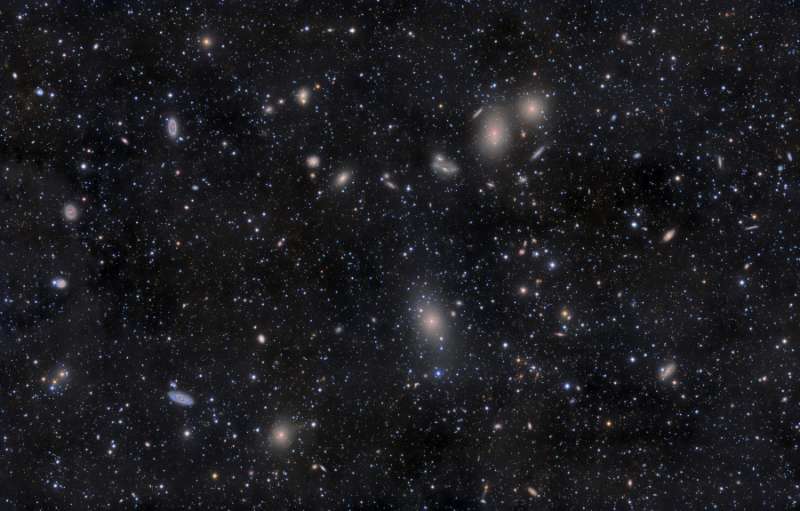
|
Credit & Copyright: Rogelio
Bernal Andreo
Explanation:
Well over a thousand galaxies are known members of
the Virgo
Cluster,
the closest large cluster of galaxies to our own
local group.
In fact, the galaxy cluster is difficult
to
appreciate all at once because
it covers such a large area on the sky.
Spanning about 5x3 degrees, this careful
mosaic of telescopic images
clearly records the central
region of the Virgo Cluster through faint
foreground dust
clouds lingering above the plane of our own Milky Way galaxy.
The cluster's dominant giant elliptical
galaxy M87, is just below center in the frame.
Above M87 is the famous interacting galaxy pair NGC 4438,
also known as The Eyes.
A closer examination of the image will
reveal many Virgo cluster member galaxies as small fuzzy patches.
Sliding your cursor over the image will label the larger galaxies
using NGC catalog designations.
Galaxies are also shown with
Messier
catalog numbers, including
M84, M86,
and prominent colorful spirals
M88,
M90, and M91.
On average, Virgo Cluster galaxies are measured to be
about 48 million light-years away.
The Virgo
Cluster distance has been used to give an important
determination of the Hubble Constant and
the scale of the Universe.
(Editor's Note: Labels courtesy of
Astrometry.net.)
|
January February March April May June July August September October November December |
| ||||||||||||||||||||||||||||||||||||||||||||||||
NASA Web Site Statements, Warnings, and Disclaimers
NASA Official: Jay Norris. Specific rights apply.
A service of: LHEA at NASA / GSFC
& Michigan Tech. U.
Based on Astronomy Picture
Of the Day
Publications with keywords: Virgo Cluster - galaxy cluster - hubble constant
Publications with words: Virgo Cluster - galaxy cluster - hubble constant
See also:
